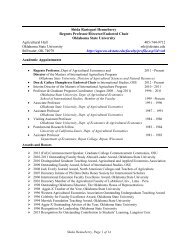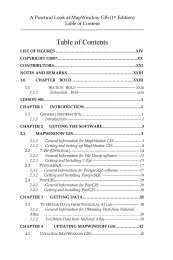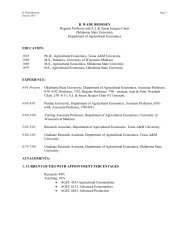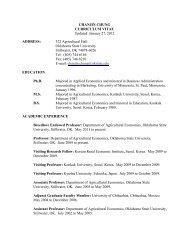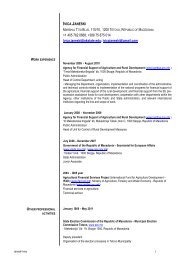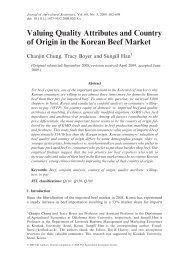Aggregate versus Disaggregate Data in Measuring School Quality
Aggregate versus Disaggregate Data in Measuring School Quality
Aggregate versus Disaggregate Data in Measuring School Quality
You also want an ePaper? Increase the reach of your titles
YUMPU automatically turns print PDFs into web optimized ePapers that Google loves.
2. <strong>Data</strong> and Procedures<br />
A Monte Carlo study was used to compare aggregate and disaggregate estimates of<br />
school effects with their true values. These values were also compared to OLS estimates with<br />
aggregate data s<strong>in</strong>ce this is what is most often done. The model on which the data generat<strong>in</strong>g<br />
process was based, was taken from Goldste<strong>in</strong>’s 1997 paper, table 3, page 387, because it was<br />
simple, and provided estimates of the random components for school and student, based on real<br />
data.<br />
This model regresses test scores of each student aga<strong>in</strong>st a previous test score, a dummy<br />
variable for gender, and a dummy for type of school (boys’, girls’, or mixed school). Test scores<br />
were transformed from ranks to standard normal deviates. The random part consists of the school<br />
effect and the student effect.<br />
Accord<strong>in</strong>g to Goldste<strong>in</strong>, multilevel analysis provides the follow<strong>in</strong>g estimated model:<br />
Tˆ score = -0.09 + 0.<br />
52Pscore<br />
+ 0.<br />
14Girl<br />
+ 0.<br />
10GirlsSch<br />
+ 0.<br />
09BoysSch<br />
,<br />
ij<br />
(14) i = 1 , K , n j j = 1,<br />
K J .<br />
ˆ 2 =<br />
u<br />
ij<br />
ij<br />
The estimated variance of school effects, also called between-school variance, is<br />
σ 0.<br />
07 , and the variance of student effects, also called with<strong>in</strong>-school variance, is ˆ 0.<br />
56<br />
2 σ = .<br />
These values and the estimates of the fixed part of the model were used to generate the<br />
disaggregate data. At each replication, n j observations were generated for each school, where n j<br />
was a random realization of a lognormal distribution. Lagged test scores were generated from a<br />
standard normal. Dummy variables were generated from b<strong>in</strong>omial distributions. The random<br />
components of the model for school and student were generated us<strong>in</strong>g a normal with zero mean<br />
and variance ˆ 0.<br />
07<br />
2 σ = and ˆ 0.<br />
56<br />
2 σ = respectively, and the actual test score was obta<strong>in</strong>ed as <strong>in</strong><br />
u<br />
e<br />
13<br />
j<br />
j<br />
e






